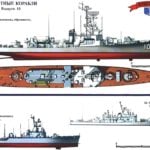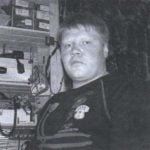 Becoming a pensioner, was engaged in the breeding of the nutria (swamp beavers, or coypu) and saw how it is a profitable business. With the low maintenance costs of these herbivores and also very unpretentious animals not only get delicious meat (an average of 2-3 kg of each species), no way inferior to the rabbit, nutritional value and dietary properties, but also (most importantly!) valuable fur, on the strength approaching a mink or a Fox, and wear exceeding ten “fur” of the Bunny.
Becoming a pensioner, was engaged in the breeding of the nutria (swamp beavers, or coypu) and saw how it is a profitable business. With the low maintenance costs of these herbivores and also very unpretentious animals not only get delicious meat (an average of 2-3 kg of each species), no way inferior to the rabbit, nutritional value and dietary properties, but also (most importantly!) valuable fur, on the strength approaching a mink or a Fox, and wear exceeding ten “fur” of the Bunny.
The number of animals needed for the maintenance, determined by the capabilities of the economy (the presence of the infield, building materials, security feeds, etc.). The minimum number of adult nutria for their offspring: one male and two females.
Females of the same litter get along well with each other and asenevtsi, feed the young, not looking whose it was. Given that each year usually brings at least two litters (five to seven pups in each), it is easy to calculate that even with a minimum number of adult nutria on a personal farm can be up to 35-45 animals.
In our area with short and mild winters practiced outward maintenance of these animals in the ground or some elevated houses (cages) with open or closed yards. However, the expectation of significant cold snaps, it is recommended to translate nutria in insulated shed.
The houses (cells) for nutria can be of various designs: one-, two – and three-tiered, fixed and remote. Moreover, hardy animals, even in barrels and barely illuminated cellars is able to safely breed. However it is better if zealous owners in advance will take care of comfortable and practical “cottages” for their nutria, according to their own possibilities and the General recommendations proper maintenance of earthen beavers.

Fig. 1. The option of wooden house-“cottage” (mesh range mikrobasseyny trough of galvanized sheet) for nutria:
1 —openable or removable shed roof (skylight); 2. compartment with mesh upholstery; 3 — aft compartment with a solid floor; 4 — feed-through wooden pipe; 5 — cage-paddock; 6 — drain groove 7 — folding strut (2); 8 — microbasin; 9 — transom; wall of house can be double (s200, insulation — sawdust, shavings and similar materials); the space between the walls (wooden and mesh) in the winter time occasionally filled with hay, which is both a food and a heater
In particular, on my mini-farm to advantage for the maintenance of the animals is a wooden two-chamber (nesting and forage branch of the) house, are upholstered inside a metal mesh (not to nutria gnawed wooden base). Housing, and a good hiding place. And directly adjacent to the house and connected to it (Fig.1) transitional wooden tube mesh cage (an enclosure) are readily used by animals to exercise.
Shed roof (skylight) of the house should open or be removable for observation of the behavior of nutria. Accessed also through the screen door, which is done in the lateral or upper wall of the paddock. In summer, it is desirable that the animals were more in the air and the sun, so the above cage preferably positioned on the South side.
The paddock is a frame (for example, a reinforcing bar with a diameter of 9-13 mm) with slanted or vertical sidewalls. The tight — mesh galvanized wire with section of 2.5 mm2 with a cell size 25×25 or 30×30 mm. Length obtained by this enclosures 1400 mm, width — 1000 mm, height 600-700 mm.
The range of wooden bars, on the inside attaching them above the net. Clean this enclosure through the top (and also mesh) transom.
The floor in the paddock must be sloped in the direction of the built-in mikrobasseyny which may be standard galvanized trough dimensions mm. 900x500x200 the Water for swimming nutria periodically change, and in the summer, do it twice a day. To facilitate such an operation, used to fill and flush the water hose, and drain the dirty water is carried out (through the hole at the bottom of mikrobasseyny, closed tube) in a drainage ditch, passing under the walking.
As already noted, the range connects with the house of the wooden pipe. Recommended bore — 300×200 mm (adult nutria) and 200×200 (for the young). The passage is closed by the gate valve.
Material for pipe, and for the wooden framework of the house, and for partition is 20-25 mm Board (tongue and groove or with selected quarter). As bedding it is better to use mixed grass hay, wheat or rice straw, and even large chips. All of this should be applied is dry and clean.
Houses for the main herd and for the young in this case differ only in the size of the hole in the wall, equal to the passage section of the pipe has already been clarified above.
As drinkers for nutria usually accommodate any tank (good in any economy designed for this — great deal). Find the use of a commercially available automatic, fairly compact design, designed to spawania-feeding of suckling piglets. However, I recommend to use a so-called kucove appliances that anyone can make even in cramped home.
The basis of this simple device (Fig.2) open at one end and is able to tilt in the vertical plane of the tube-dispenser in stainless steel, inserted into a segment of thick-walled rubber hose that acts as not only delivers the water, but also elastic breaker water. The reliability of tube-rubber joint is provided by flaring the lower end of the tube, and a wire twisting and mushroom sleeve, is not only a kind of brace, but one-sided stroke limiter of the dispenser in a horizontal plane.
The required water level is set by using the surge tank of the water system is connected (with fitting) this cepkova autodrinking. Nutria, want to drink, dad presses on the tube-dispenser. The hose is bent, and the portion of water flows out of the troughs. In the initial state, the drinker is returned under the action of elastic thick-walled rubber hose.

Fig. 2. Kucova autodrinking:
1 — tube-dispenser (tube 7×2,75 1L); 2 guide rail clamp (s1); 3 — mushroom bushing; 4 — belt (wire PEV-0,5); 5 — thick-walled rubber hose; 6 — nozzle; 7 — pipe water system; 8 — water (level is set by using the surge tank of the water system); 9 — wall; 10 — skeleton dog-cages; material det. POS. 1 — 3 — stainless steel

Fig. 3. Feeder pipes of…:
1 — trough-basis (half of 350 mm cut stainless steel pipe 140×2,5); 2 — side panel (2 PCs); 3 — mounting pin (warnau bolt M14 2); 4 — M14 nut with washer

Fig. 4. The steaming-plant:
1 — cover; 2 — body; 3 — lattice (stainless steel); 4 — steam generator (water); 5 — welded tripod (reinforcing bar Ø35); 6 — teploelektroenergetiki (ten-220/2, 2 items); 7 — twisted pair cable with plug at the end; 8 — sealed rotary bottom; material det. POS. 1,2,8 — fragments of flasks made of stainless steel or aluminum
The trough can be varied. For example, in the form zheloboobraznogo trough, the analogue of which is the “feeder piggy” (see No. 7’2000 of the journal “modelist-Konstruktor”). I make these in pairs: a 350-mm lengths of pipe (stainless steel, range 140×2. 5mm). The workpiece is cut by a blowtorch (lengthwise and in half), the ends of the halves are welded paludisme of the same material (Fig.3). Outside in the middle of the bottoms wireway a pair of fastening rods (bolts) and get two feeders. Each feature along the front wall of the aft compartment of the cabin, pass the retaining pin through the hole in the floor and nevinchany nuts.
As practice shows, these feeders take up little space, do not tip, besides, they are easy to clean.
Farms for feeding nutria often used food (but not dirty or sour!) and garden waste; remnants of bread, crackers, remnants of cereals, soups, greens and raw clean vegetables, boiled potato… But to eat these rodents can, and what it is normally recommended to feed rabbits, sheep, cattle. In addition, nutrias willingly eat marsh vegetation, rhizomes and shoots of cattail, bulrush, reeds, and branches of oak, willow, poplar, birch.
In areas of cultivation of grapes used as woody and succulent feed for beaver marsh vine, removed during the spring and autumn pruning. Given that the nutritional value of this feed material, according to agricultural science, almost not inferior to the roots, it makes sense to harvest it in the autumn in store for the winter. Fed — net in the paddock, similar to the branches of deciduous trees.
With regard to root crops, they are primarily used from September to April. Juicy feed the nutria give beets, carrots, turnips. Sometimes the diet includes vegetables (cabbage, cucumbers, tomatoes, sorrel, lettuce, zucchini, pumpkin, watermelon, melon), and sometimes waste from processing fruit, berries, etc. are usually boiled Potatoes, mash and add to the bran or feed. Watch that the mixture was thick. Before feeding of them make small balls, which are readily eaten by animals.
For nutria produced feed concentrate according to the recipe To-91-1. The bulk of it is barley (45% of total weight), corn (40%), followed by oil cake, sunflower meal (8%), fish meal (6%) and, finally, 0.5% of salt and fodder chalk.
In the absence of separate components instead of them add other similar nutritional value. For example, barley and maize replace with oats or wheat, sunflower seed meal, linseed, soybean, pea and fish meal — meat and bone meal or fodder yeast. If the farm has the necessary set of feed and their grinders (for example, home-made, made according to the developments that are published in № 11/12’98, 8’99, 2’2000 of the journal “modelist-Konstruktor”), to prepare such concentrates is not difficult.
Before feeding feed be sure to moisturize at the rate of 1 part of dry matter is necessary 1-1,5 parts of water. Many (including this writer) is practiced by steaming, and not only feed, but most of that goes to feeding nutria. In particular, heat treatment subject to local animal feed (skim or whole milk powder, meat and bone meal, waste from slaughterhouses, fish and products of its processing, freshwater clams, leeches,frogs, crayfish, etc.).
For steaming of fodder developed and successfully applied various devices (see for example, № 6’97 the magazine “modelist-Konstruktor”), a special equipment. For small farms it is possible to recommend and the steaming-plant manufactured on the basis of the old jar from aluminum, and even better — made of stainless steel (Fig.4).
The bottom of such a vessel is cut off and, slightly pulling the edges with a hammer to any anvil (even if improvised), turn in a cover. What was left of the flask-blanks, turn down collar and mounted on a makeshift tripod made of steel (it is quite suitable reinforcing) rod.
At the top of the shell for reinforcing bars in the neck mounted two teploelektroenergetiki (PETN) from old household appliances of type of the samovar or the kettle. In the steaming-plant (Fig.4) pour 3-4 liters of water on the grill, put the raw material (feed) and plugging (in compliance with the rules of electrical safety, preferably through an isolating transformer) heating elements to the mains, start to prepare food for “cottage” nutria, and other domestic animals.
A. TIMOSHENKO, Feodosia



